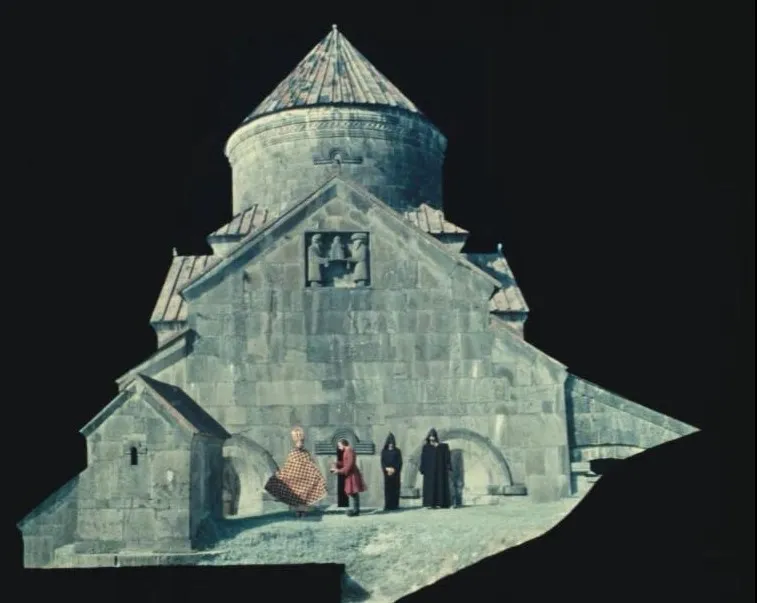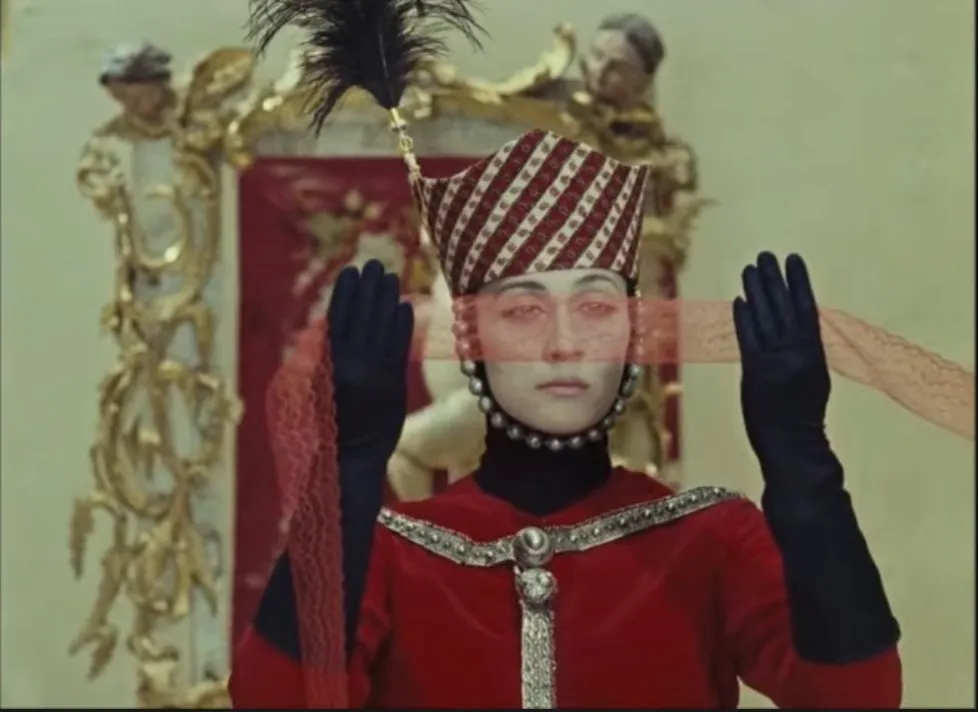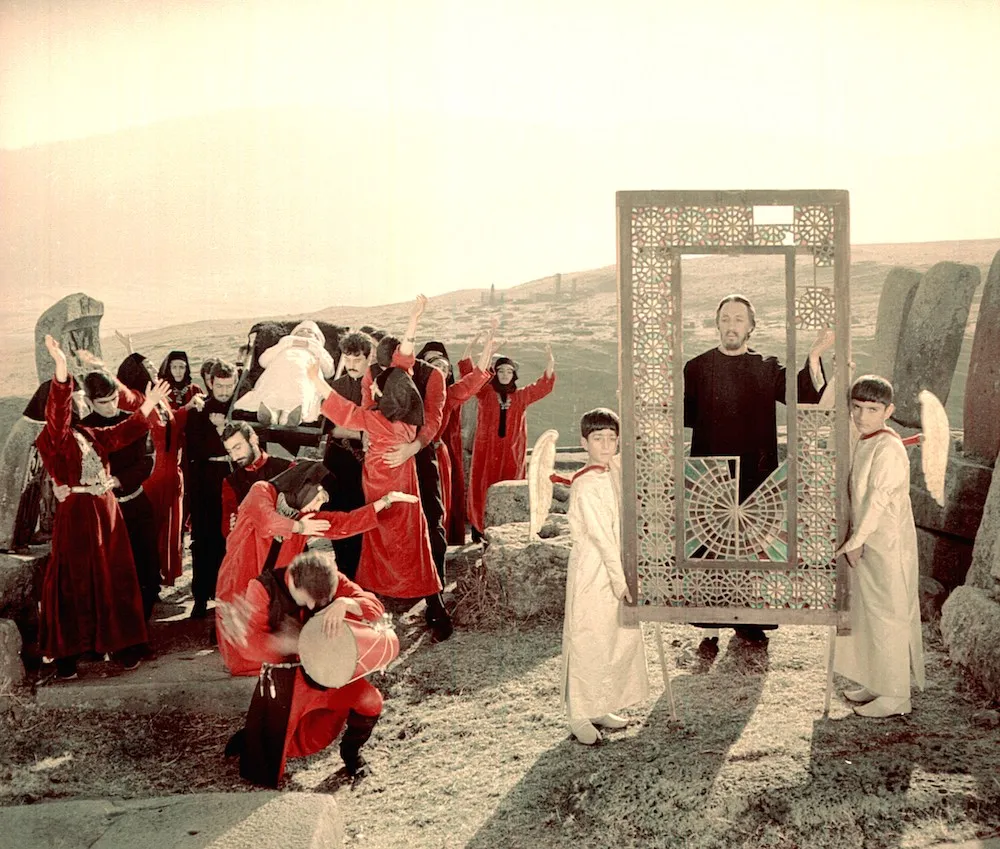"Not everyone can drink my water,
it is of another water.
Not everyone can read my writing,
it is of a different script.
Do not think my substance is sand:
it is a crag of solid rock.
As like a torrent that never dries,
do not (try to) wear it down".
Sayat Nova
This is a film about a poet, Sayat Nova ("The Lord of the songs", as the name means), a famous Armenian ashugh* of the 18th century. It is not a biographical film, it does not portray his life in any of the usual narrative norms. No story is told as we are used to. The director, Sergei Parajanov, like a poet, through artistic depictions and symbolisms unfolds the personality of the most important Armenian poet and at the same time we "steal glances" at the folk tradition and history of Armenia.
“This film is not the story of a poet’s life. Instead, the filmmaker has attempted to recreate the world of the poet”
From the title scenes
Poster of "The Color of Pomegranate" (1969) or "Sayat Nova" as the russian title is.
From the first scenes, the director places three pomegranates on a white cloth, which stain it with their red color, red as blood, to remind us of the many passions of Armenia. The scene unfolds slowly, like blood flowing and soiling everything in its path.

source
Parajanov divides his narrative into eight chapters, each of which marks an important aspect in the life of our poet, using "tableaux vivants", living pictures that is. A detailed depiction that every element inside it had its own meaning.
Parajanov had a special love for his homeland, Armenia. To present his story he used the elements that characterize Armenia: The Armenian Orthodox church tradition, the colorful, elaborate costumes of men and women, the traditional musical instruments, the objects of their daily life, carpets everywhere, the loom and the delicate laces, the strict monastic and wild landscapes.
And of course, colors everywhere. Vivid colored clothes or artifacts that highlight every scene, encrypting the profound notions.
Very little is said, that is there isn't much dialogue in the film. But also there is no need to. Almost all it is "said" by the images created in cinematography. Images that narrates the inspiration and passions of Sayat Nova.
1 Childhood
Sayat Nova, although born in Tbilisi, he grew up in Armenia - like Parajanov, perhaps that's why the director felt a connection. A country with long tradition in spiritual cultivation, helped him understand the power of speech and conquered it through books.
But gaining knowledge is not easy. Watch on this scene, the students soaked in the knowledge they squeezed from the books. See the little poet carrying the heavy book so that he can incorporate it into himself so that he can pass it on to others.
The only road to the conquest of "Virtue" is uphill, as Plato would say.

2 Youth
The poet grows up. Childhood had given its way to youth in the most genius scene in cinematography. The child goes hiding behind the young - now- poet, as our childhood is hidden inside us and never leaves us. It hugs us tightly -like the little chld in the scene is about to do- and comes out in crucial times.
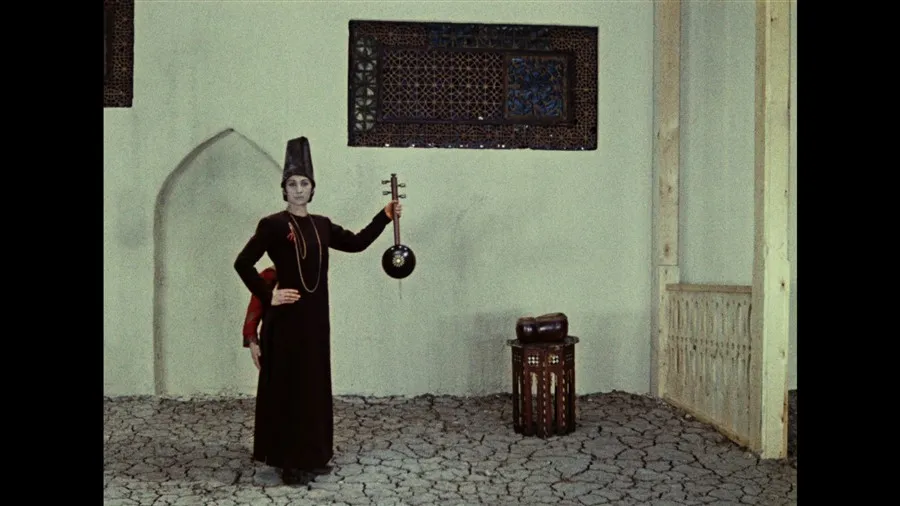
source
3 Prince's Court (Tsarina Ana)
Living inside the prince's court, the poet meets the beautiful tsarina Ana.
Parajanov presents this love call, the attempt to approach the beautiful tsar as a majestic stylistic iconoclastic poem. From the choice of the same actress to play both the male and female roles, thus giving the dual Platonic perception of the other half we are always looking for,
the change in the clothes of the lovers with the awakening of passion (from light blue to bright red, like that of the pomegranate, the symbol of passion)
" You are fire. Your dress is fire"
to absolute black when their love is forbidden by the tsar. I do not think that a love story has been told so simply, without even the physical contact of the lovers.

source
4 The monastery
Deprived from his true love, the poet becomes a priest. The ascetic nature of the eastern orthodox doctrine fills his soul, but the need to sing and write is always there.
5 The Dream

As the poet grows older, the heavy hand of time comes to flatten him. The poet dreams of what is important to him: his parents, his books, his music, his eternal love. All located in the rocky Armenian nature and surrounded by the Armenian folklore that shaped him.

6 The Old age

Source -snapshot taken by me

Source -snapshot taken by me
7 The Angel of Death
The poet is visited by the Angel of Death. He revises his life and finds that he has read, written and sung enough. Therefore he is ready for the death to come.
source
In a most cinematogaphic scene, the poet takes gladly the gift of death. He has loved and beem loved, now it is time for his pen to quiet.
8 The Death
The child inside us comes always in crucial times. So, the poet sees once more himself as child, bringing him a pair of angel wings. The poet lies now among the candles that slowly blown out as he dies.

source

source
There were too many images that I wanted to include in this post, but I would three lives to a(nalyse them. )
To say that this film is my favourite movie of all time is redundancy. Maybe you have understood it from my profile photo, the image of the tsarina in love, dressed in crimson.
I have loved this movie so much. I was captivated by its aesthetics, the combination of the landscape with the Armenian tradition and the wild music of the oriental soul. Maybe my Balkan self draws me there.
But I believe that no one can deny, no matter how difficult or incomprehensible the film may seem to him (some may characterize it as a heavy culture):
It is a poetic film about a poet, made by a poet.
How can I bear this misery, unless my heart were stone?
My tears are blood because of thee, my reason is o’erthrown.
A young vine in the garden fresh thou art to me, my fair,
Enshrined in greenness, and set round with roses everywhere.
I, like the love-lorn nightingale, would hover over thee.
A landscape of delight and love, my queen, thou art to me!
—Sayat Nova, ‘Love Song’
Thank you for reading!
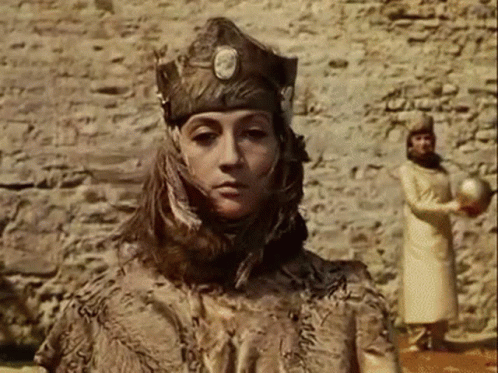
This post was written for the CineTv contest. You can read all about it in the link.
*ashugh=singer-poet, trobadour



